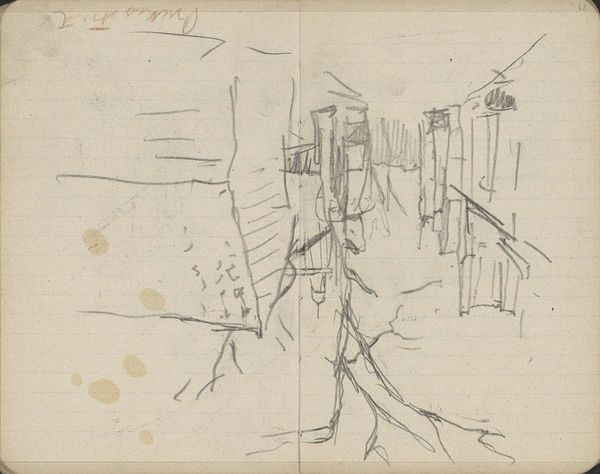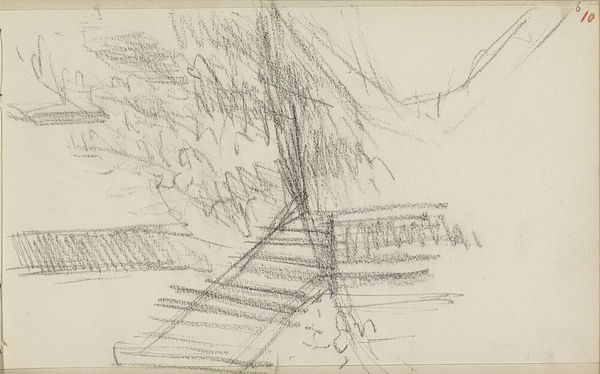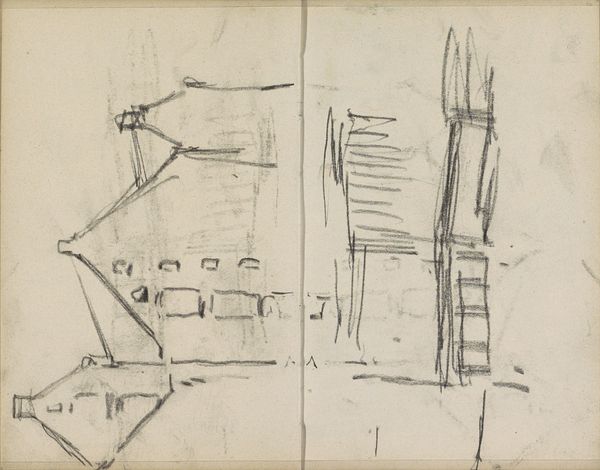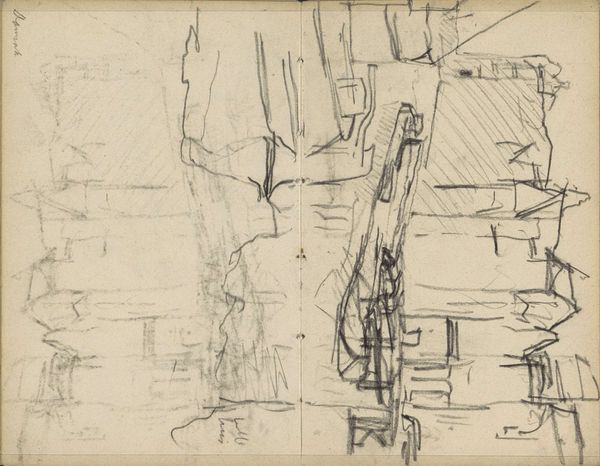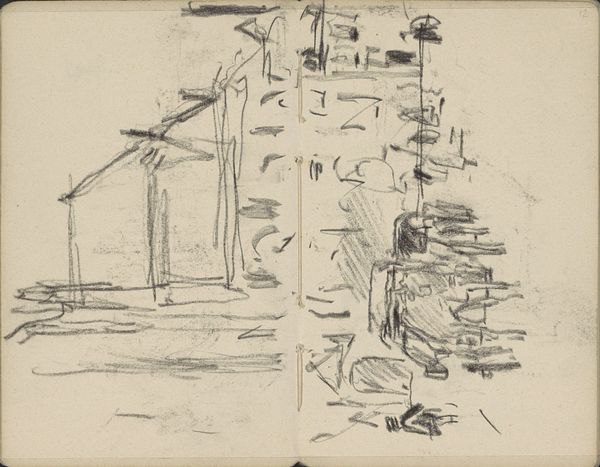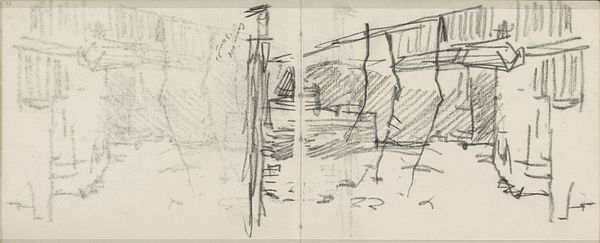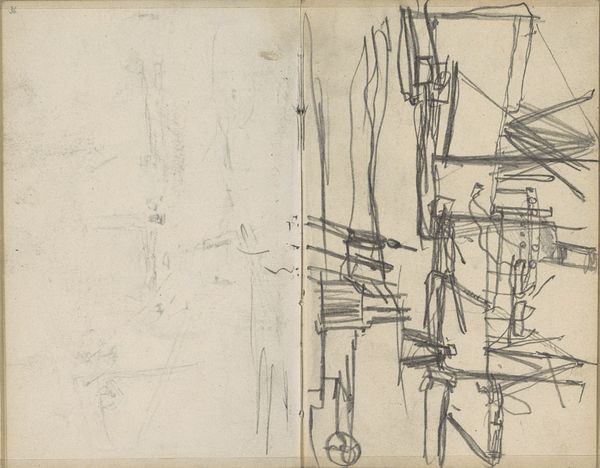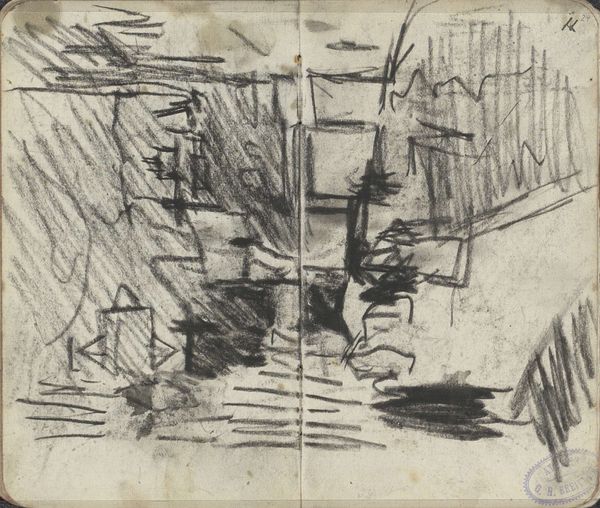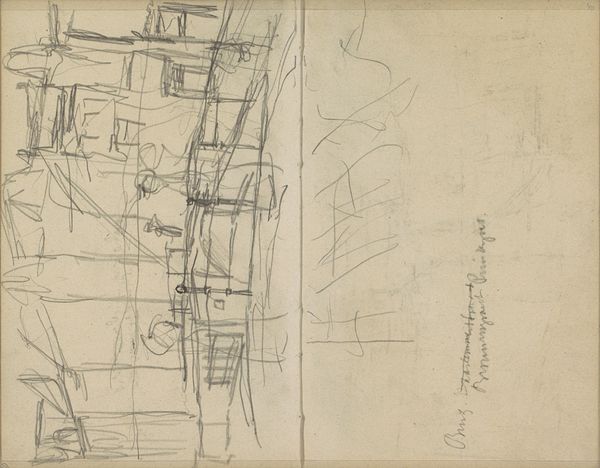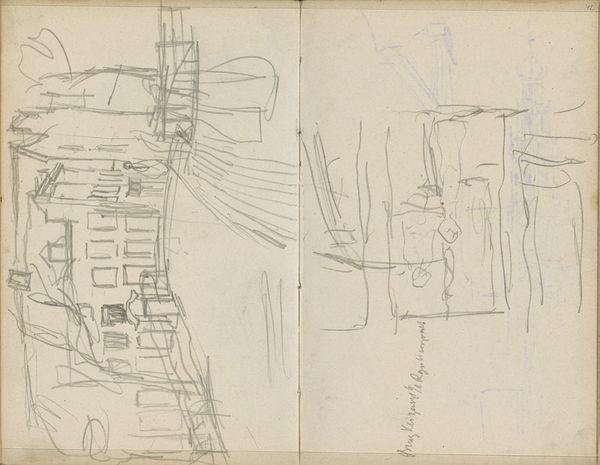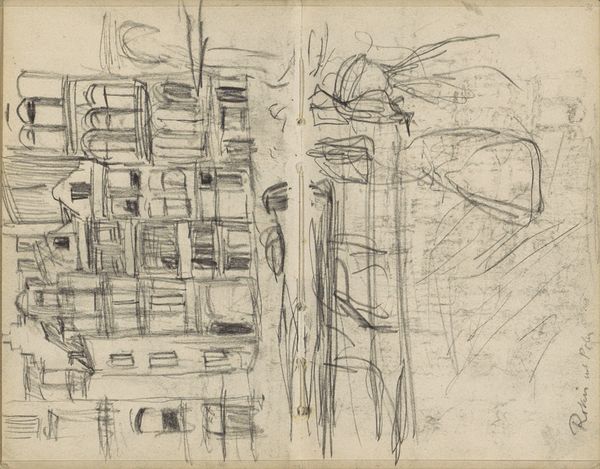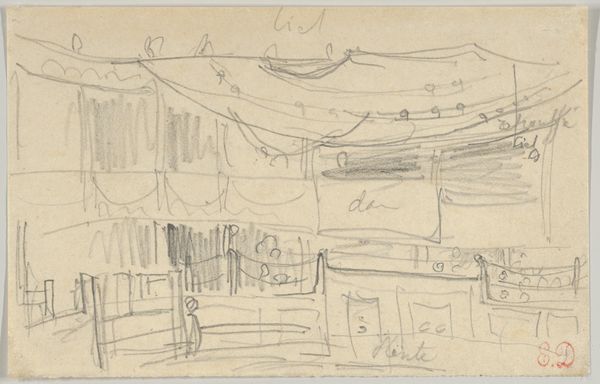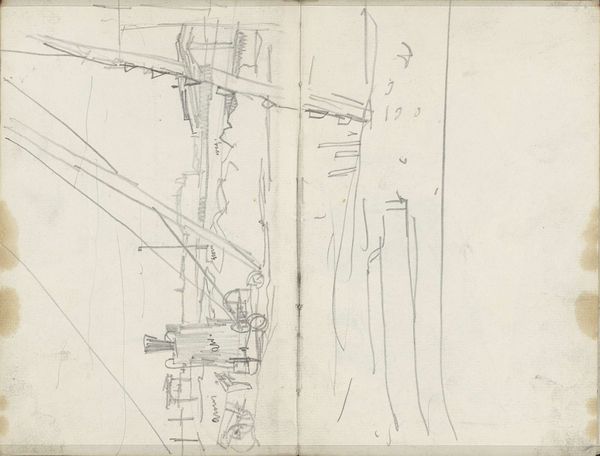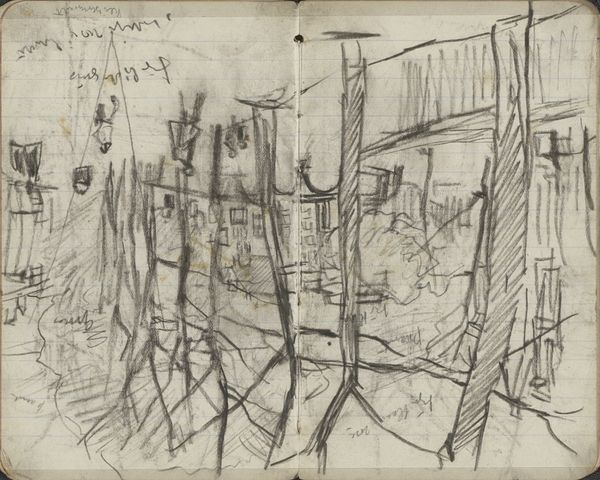
Copyright: Rijks Museum: Open Domain
Editor: This drawing, "Gezicht in Amsterdam" or "View in Amsterdam," by George Hendrik Breitner, made in 1917, really grabs my attention. It's a graphite drawing, and the quick, almost frantic lines create such an urban mood. What stands out to you in this cityscape? Curator: Breitner, as a key figure in the Amsterdam Impressionism movement, consistently engaged with capturing urban life. This piece, a quick sketch in graphite, offers insights into his process. But I see this work also through a political lens. Think about Amsterdam at the time. It was on the periphery of World War One. Does that mood of anxiety bleed into the apparent spontaneity of this drawing? Editor: That's fascinating! I was focused on the artistic style. It does feel like more than just a quick sketch now that you mention the historical context. What would people at the time thought when viewing this art? Curator: Consider the evolving role of art and its institutions. Museums and galleries were becoming increasingly significant in shaping public opinion. So, the choice to depict ordinary urban scenes in a rapid style—not heroic landscapes, not aristocratic portraits—signals a shift in who and what was considered worthy of representation. Breitner was not simply depicting Amsterdam. He was constructing a new kind of Amsterdam for public consumption, even. Editor: So, you’re saying it’s not just about seeing the city, but about the *idea* of the city being presented? That's completely altered my perspective. Thanks! Curator: Exactly! And thinking about the artist's intention, the public consumption, how the artistic creation meets and reflects public, it enhances the understanding of this landscape, this drawing and the urbanity it embodies.
Comments
No comments
Be the first to comment and join the conversation on the ultimate creative platform.
